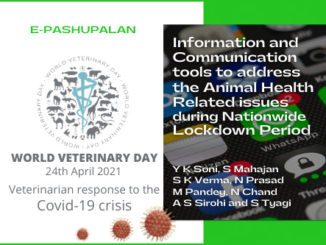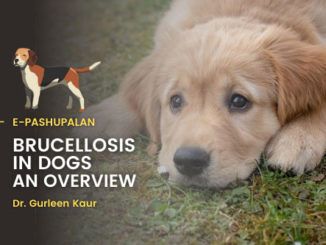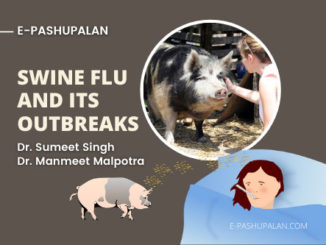What is pork tapeworm?
Taenia solium, commonly called as pork tapeworm is a flatworm infecting pigs (Intermediate host) and humans (Definitive host). Adult tapeworms are found in small intestine of infected person following ingestion of contaminated pork (Measly Pork).
What is measly pork?
Pigs flesh containing cysticercus (larval form of pork tapeworm, Taenia solium) is called measly pork.
How do you know if a pig is infected?
Pigs usually do not show signs of infection. Pigs acquire infection through consumption of human faeces, or through feed and drinking water contaminated with ova. In pigs, the cysticerci commonly develop in skeletal muscles, thigh, neck tongue, diaphragm, heart and other organs, including brain and eye. Intramuscular sites are the most common areas affected. A cysticercus infection (commonly referred to as measly pork) is usually only found when the meat is inspected.
How does the tapeworm harm humans?
There are two forms of human infection:
One is “primary hosting”, called taeniasis, and is due to eating under-cooked pork that contains the cysts and results in adult worms in the intestines. This form generally is without symptoms; the infected person does not know they have tapeworms. The presence of an adult tapeworm in the intestine may cause non-specific symptoms such as abdominal pain, diarrhoea or constipation. This form is easily treated with anthelmintic medications which eliminate the tapeworm.
The other form, “secondary hosting”, called cysticercosis/ Neurocysticercosis, is due to eating food, or drinking water, contaminated with faeces from someone infected by the adult worms, thus ingesting the tapeworm eggs, instead of the cysts. If someone ingests eggs with contaminated food/water or while eating with un-sanitized hands, the parasite finds its way to the small intestine where the egg hatches the oncosphere. From here the parasite spreads to the brain to form of cystic lesions (Neurocysticercosis), also affecting the eyes (ophthalmic-cysticercosis) and muscles or spinal cord. Neurocysticercosis is a common cause of seizures and neurologic disease. Although there may be variable presentations depending on the stage and location of cysts in the nervous system, most children (> 80%) present with seizures particularly partial seizures. National Institute of Mental Health and Neuro Sciences (NIMHANS), Bangalore reported diagnosis of Neurocysticercosis in 2% of an unselected series of epileptics.
Who are most vulnerable to Neurocysticercosis (NCC)?
Neurocysticercosis is the most common parasitic infection of the Central Nervous System caused by ingestion of Taenia solium eggs and identified as a cause of acquired active epilepsy. NCC is common in communities where basic sanitary facilities are lacking and the residents consume contaminated food/water. It is widely prevalent in developing countries in sub-Saharan Africa, Asia, and Latin America. Cysticercosis is considered by the World Health Organization to be the most common preventable cause of epilepsy in the developing world, with an estimated 2 million people having epilepsy caused by T. solium infection. Symptomatic neurocysticercosis accounts for approximately one-third of seizure disorders and contributes to other neurological disease, among which recurrent or chronic headaches are probably underestimated. This alarming form of the disease is a public health problem in developing countries and is a “biological marker” of social and economic development.
What are the symptoms in humans?
Taeniasis (a gastrointestinal infection) symptoms include diarrhea, loss of weight, malnutrition, nausea and abdominal pain.
Ophthalmic cysticercosis (when cysticercus encysted in the eye of the host) shows edema and haemorrhaging of the retina, blurred vision and inflammation of the choroid of the eye.
In patients with Neurocysticercosis (NCC), the most common symptoms include headaches, nausea, vomiting, blurred vision, confusion, epileptic attacks, seizures, encephalitis and psychiatric manifestations.
Prevention & Control
- Emphasize improvement in general sanitation, health education, separation of pigs from humans, strict compliance of meat inspection and hygienic food preparation in endemic areas.
- Prevention of exposure to infected ova in the home and community is the most effective preventative measure.
- Examine stools from contacts using 3 consecutive daily specimens.
- Educate patients and their families regarding prevention.
- Mass Sensitization of the public regarding the prevention.






Be the first to comment